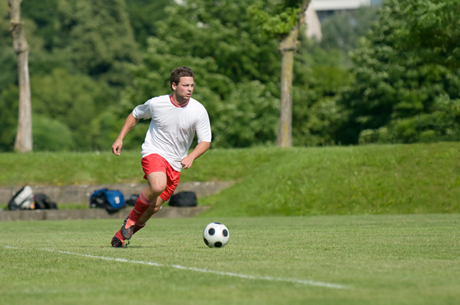If you regularly play soccer, you’ll already know it’s a game of endurance, but it’s also a game of accuracy. We don’t often utilize our feet to their full potential in day-to-day life. Though it’d be nice to be able to write an essay or wash the dishes with our feet, and have them be just as dexterous as our hands, it’s simply not the case. And since soccer is game all about your feet, when playing, it’s extremely important to work on your passing and shooting accuracy. Here are 5 helpful tips that’ll improve the effectiveness of your soccer shooting.

- Shoot more. Michael Jordan was once asked why he scored so much more than his teammates. His reply went like this: “Because I take more shots”. It’s a simple concept really, and although Michael Jordan was a basketball player, the same principal can be applied to any sport and soccer is no exception. If you want to improve your shooting accuracy, then you’re going to have to take a lot more shots. Now this doesn’t mean you have to shoot the ball every time you receive it from a teammate, but it means that you need to practice shooting more in the game and out of the game. Get yourself a decent set of training goals from Golme, Inc and start shooting 200 shots on goal every day.
- Work on your angles. In a game of soccer you may find yourself anywhere on the pitch and at any given moment, the ball might land at your feet, and you’ll have the opportunity to score a goal. Working on shooting at all angles is of utmost importance if you want to take advantage of every scoring opportunity. Distance is a factor too. Learn how to shoot from far out as well as close up and everywhere in between. If you have the ability to control a kick from far out, then you’ll be an asset as a scoring midfielder or defender.
- Pay attention to your foot. One of the most important things about kicking a soccer ball and having it land in the spot that you intended is the subtle differences in the angle of your foot when you kick the ball. You need to get a good understanding of your foot’s relationship to the ball. If you kick the ball with the top of your foot (instep), where does it travel? If you kick with the inside or the outside of your foot, the ball will react differently. Be sure to make note of the way the ball responds to all of these different kicking methods and you’ll be able to harness the ball as if it were an extension of your own body. An instep will have greater power while the inside of your foot will have greater accuracy. The outside will create backspin.
- Shoot low to the ground. Learning to keep the ball down close to the ground, whilst still retaining power and accuracy, will be your greatest asset as a striker. Lean your body over the ball in order to not lift the ball up with your toes. This will ensure that the ball stays low and will mean that the goalkeeper has to drop to the ground in order to stop the ball. This is difficult for most goalkeepers (certainly a lot harder than receiving a shot at chest height.)
- Study the facts and figures. Placing the ball in the most dangerous spots for the goalkeeper will up your chances of scoring a goal infinitely. So, in order to do this, you must identify the danger zones for the goalkeeper. Aiming for the top left, top center and top right of the goal results in an average of a 5 or 6 percent chance of scoring. Middle left, center and right has a similar percentage – pretty low. However, by aiming for the Bottom left (22%), Bottom Center (21%) and Bottom right (19%) of the goals, you will up your chances of scoring dramatically. So, learn to keep the ball low as much as you can when striking. For more visit http://trenchpress.com/


